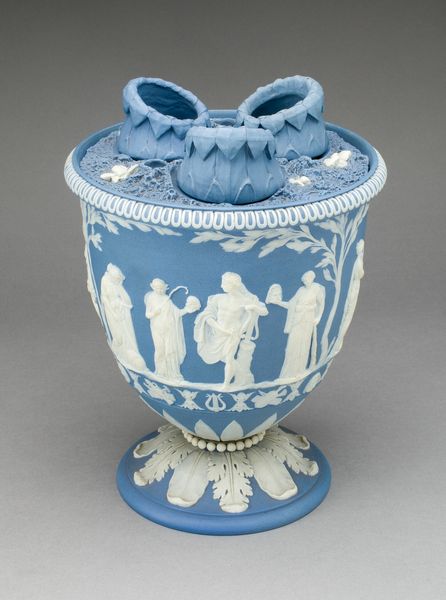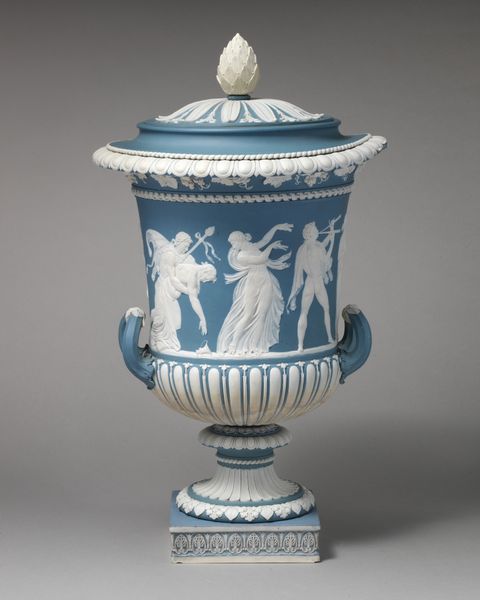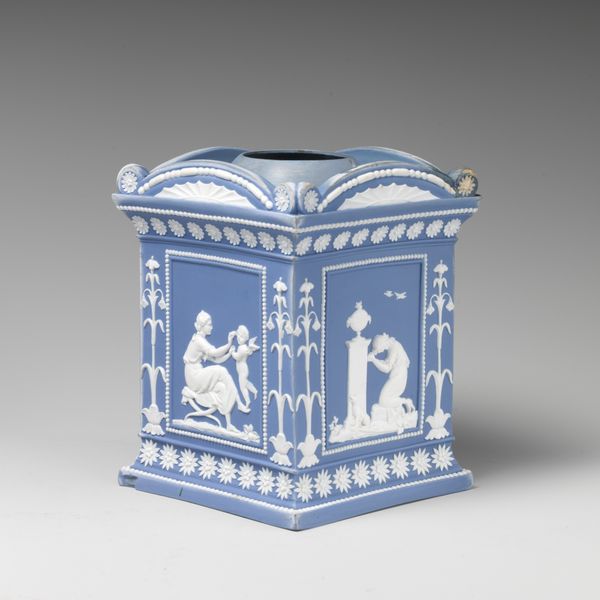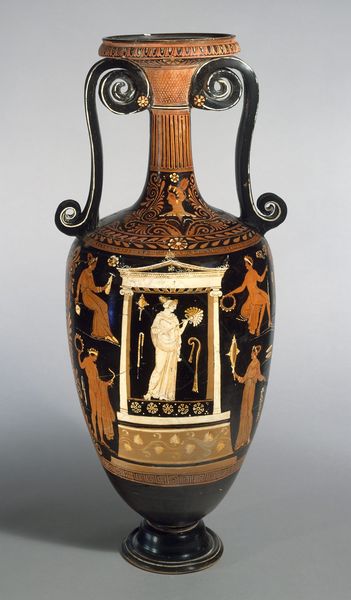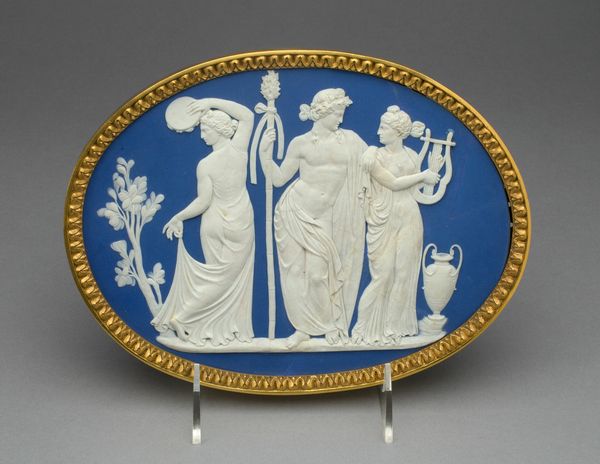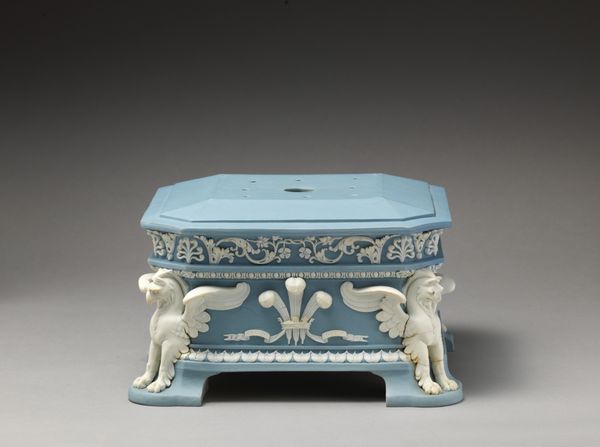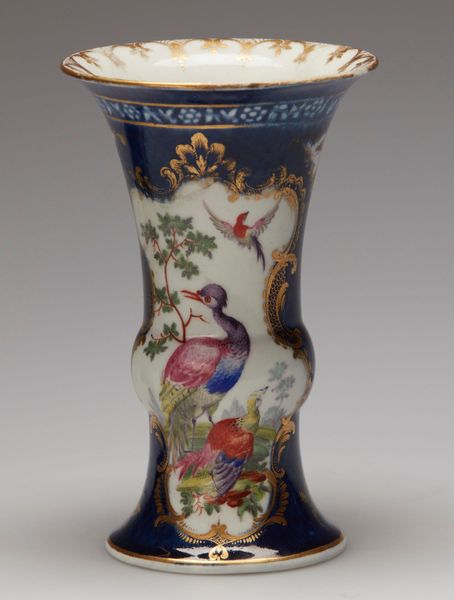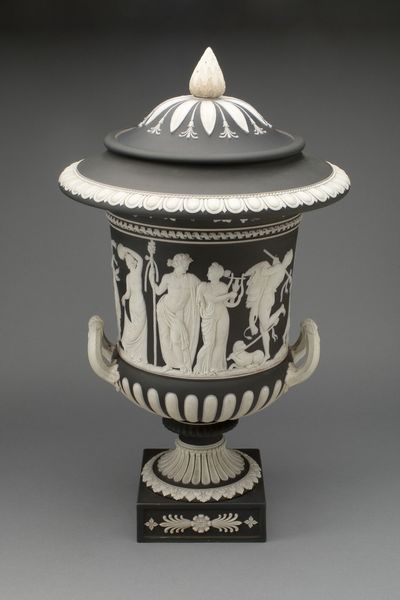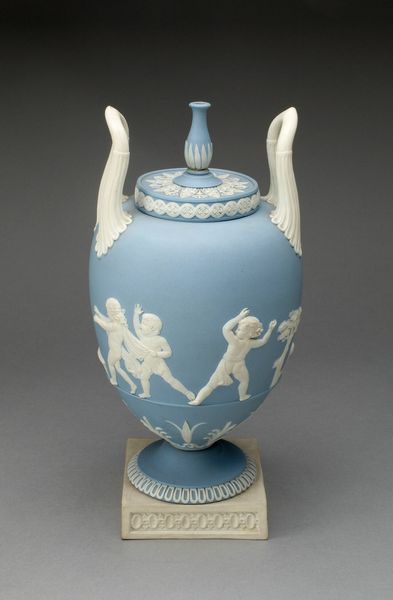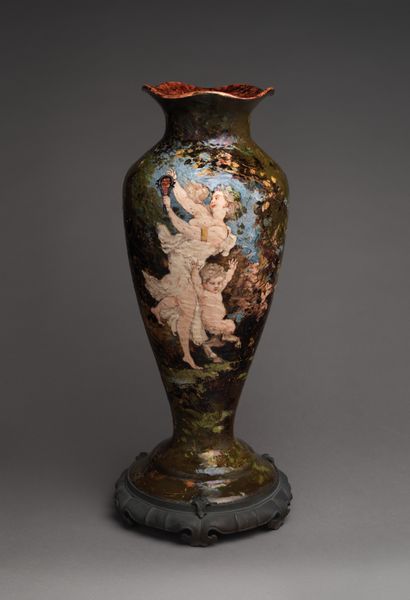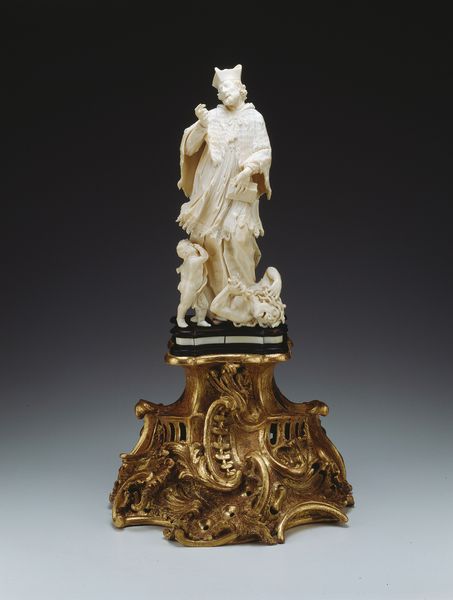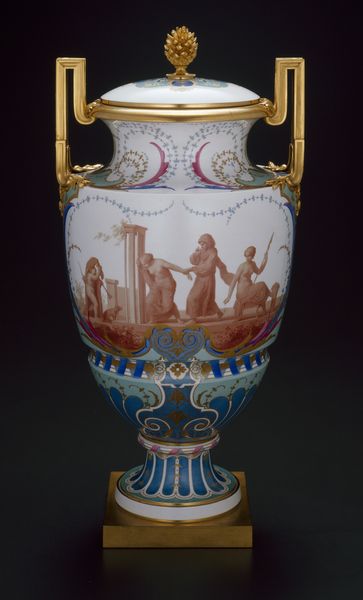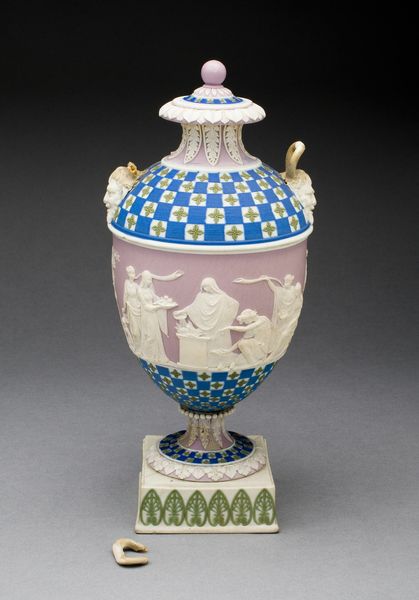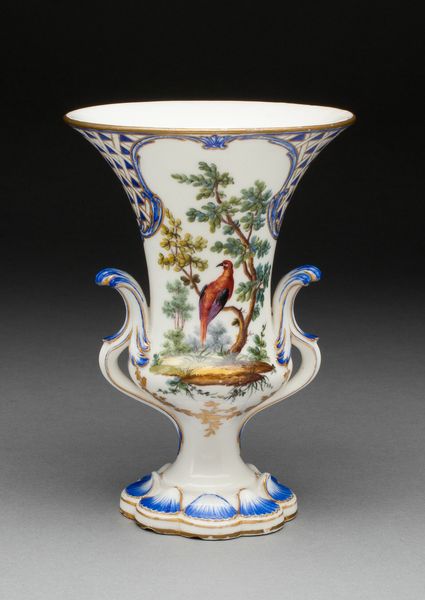
relief, ceramic, sculpture
#
neoclacissism
#
greek-and-roman-art
#
relief
#
ceramic
#
sculpture
#
decorative-art
Dimensions: 22.2 × 17.8 × 17.2 cm (8 3/4 × 7 × 6 3/4 in.)
Copyright: Public Domain
Curator: This beautiful object is a pedestal crafted by the Wedgwood Manufactory around 1785. You can find it here at the Art Institute of Chicago. Editor: My initial impression is that it feels incredibly…restrained, almost cool to the touch just by looking at it. The cobalt blue against the creamy white gives it a regal presence. Curator: Absolutely. Wedgwood was crucial in popularizing neoclassical style. This piece demonstrates the intense interest in ancient Greek and Roman art that pervaded the late 18th century. Notice the figure, likely representing a Greek goddess, rendered in relief. Editor: And the medium, Jasperware. It was incredibly innovative at the time, right? To mimic the look of ancient cameos but produced industrially. What statements were they trying to make about artistic labor? Curator: The mass production allowed them to democratize luxury, making it accessible to a broader market. While Wedgwood sought inspiration from antiquity, he also leveraged new industrial techniques, and these pieces played a crucial role in interior design. It speaks to the aspirations of the rising middle class, and the new relationship between artistry and enterprise. Editor: You also can't ignore how the materials relate to power, specifically the connection of the cobalt blue dye and the slave trade routes from which this color was sourced, though less directly for Wedgewood, since they had their own methods. It casts a bit of shadow to the crisp whiteness that dominates. Curator: Yes, it prompts one to examine the underpinnings of wealth and aesthetics in this period, and also the labor of crafting such a meticulous material in factories. This really challenges us to understand how cultural ideals are spread by industries, beyond individual art objects. Editor: Seeing something like this reminds you that beauty always comes with its own specific cost and context. It’s not merely timeless or inherent. Curator: Indeed, and recognizing those complicated roots gives it all the more historical impact.
Comments
No comments
Be the first to comment and join the conversation on the ultimate creative platform.
